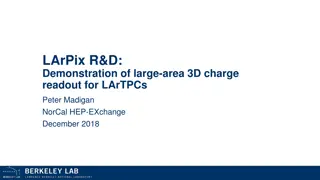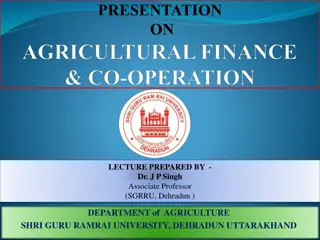Hydrogen Energy Storage Market
Hydrogen is produced through electrolysis of water and the gas is stored in medium or large sized containers according to the requirements. The gas can be converted into energy in combustion engine or in fuel cell. Usually, hydrogen energy is stored in three form; liquid, solid, and gaseous form. To
2 views • 6 slides
❤Book⚡[PDF]✔ The Apollo Guidance Computer: Architecture and Operation (Springer
\"COPY LINK HERE ; https:\/\/getpdf.readbooks.link\/1441908765\n\nDownload Book [PDF] The Apollo Guidance Computer: Architecture and Operation (Springer Praxis Books) | The Apollo Guidance Computer: Architecture and Operation (Springer Praxis Books)\n\"\n
2 views • 6 slides
NASA Cryogenic Fluid Management Flight Demonstration Summary
NASA selected 14 companies, including small businesses, to develop technologies for sustainable operations on the Moon under the Artemis program. The Cryogenic Fluid Management Portfolio Project aims to close technology gaps essential for future space missions. This Technology Demonstration Mission
0 views • 10 slides
Lessons Learned from EAM Logbooks for Cryogenic Operation at CERN
This presentation discusses the lessons learned from EAM-based Logbooks in managing cryogenic installations at CERN. It covers the importance of logbooks, historical perspectives, operational aspects, and the detailed views provided by logbook records.
7 views • 22 slides
SMuRF: SLAC Microresonator RF Readout
SMuRF group at SLAC developed a cutting-edge RF readout system for cryogenic micro-resonators used in research. The system features cold resonators tuned with TES current and a flux ramp to eliminate 1/f noise. Key technical challenges include noise, linearity, wide bandwidth, and computation power.
4 views • 16 slides
Cryogenic Sub-systems
Explore the relationship between liquefaction, refrigeration, and isothermal processes in accelerator systems. Understand the equivalent exergy in Watts for different gases at 1 bar and 300K. Calculate the reversible input power required for latent cooling and the total cooling in different scenario
1 views • 9 slides
Cryogenic Heated Tube Flow Boiling Experiments with Generalized Fluid System Simulation Program
Modeling of cryogenic heated tube flow boiling experiments of nitrogen and methane using the Generalized Fluid System Simulation Program. The research conducted by Michael Baldwin and co-authors from NASA MSFC, NASA GRC, and Purdue University explores the motivation, background, and findings related
0 views • 18 slides
Comprehensive Guide to Oxygen Storage and Handling Methods
Explore the various methods of storing and handling oxygen, including types of storage devices, sources of medical oxygen, liquid oxygen containers, and cryogenic liquid cylinders. Learn about the different containers used, storage quantities, vaporization rates, and safety measures involved in stor
0 views • 61 slides
Understanding Reactor Campaign in Nuclear Power Operations
Reactor campaign in nuclear power operations is crucial for ensuring safe and efficient reactor power operation. It involves managing reactivity margin, fuel residence time, nominal power, and effective days of operation. Reactor campaigns are influenced by various factors such as fuel elements' res
1 views • 64 slides
Enhanced Multi-Link Single Radio Operation Proposal
The proposal discusses an enhanced mode of operation for single radio non-AP MLDs to enable multi-link operation, improving throughput and reducing latency. It addresses challenges in busy network environments, aiming to achieve low latency benefits similar to concurrent dual radio setups. The propo
0 views • 22 slides
Specific Controls Requirements for p-Linac at GSI Helmholtzzentrum
Explore the specific control requirements for the p-Linac at GSI Helmholtzzentrum, including detailed information on beam energy, design current, RF power, and related devices. Get insights into the overall design, main devices, FAIR primary beam chain, booster operation, and parallel operation exam
0 views • 13 slides
Considerations on Coordinated OFDMA Operation in IEEE 802.11
The document discusses the Coordinated OFDMA (C-OFDMA) operation as a part of Multi-AP coordination schemes within the IEEE 802.11 standard. It covers resource allocation options, topology considerations, resource allocation methods, capability announcement procedures, and negotiation processes betw
0 views • 15 slides
Discussion on FDM Operation for SL and Uu in Licensed Band at 3GPP TSG-RAN WG4#98-e Meeting
The 3GPP TSG-RAN WG4#98-e meeting discussed introducing Frequency Division Multiplexing (FDM) operation for Uplink (UL) and Secondary Link (SL) in licensed bands. Topics included frequency separation, power control, RF architecture, and intra-band Carrier Aggregation (CA). Options were considered fo
0 views • 10 slides
Understanding Multi-AP Operation in IEEE 802.11-20-0617/r3
Explore the basic definitions and key features of Multi-AP operation in the IEEE 802.11 standard. Learn about Multi-AP Candidate Set (M-AP-CS) and Multi-AP Operation Set (M-AP-OS) along with their participants and formation. Delve into the concepts of Coordinator AP, Coordinated AP(s), and reliable
0 views • 19 slides
Exploring Advanced Nuclear Physics and Technologies in International PhD Projects
Delve into cutting-edge research projects in applied nuclear physics and innovative technologies supported by the Foundation for Polish Science. Investigate the behavior of radioactive ions in cryogenic liquids and delve into physics beyond the Standard Model through experiments like double-beta dec
2 views • 11 slides
Status Update on GRANIT Spectrometer at Les Houches (August 19, 2024)
GRANIT aims to increase observation time of neutrons in gravitational states and enhance precision of measurements. Details about the clean room, UCNs hunting, and progress made in 2010 are outlined, emphasizing the need for system reliability and improvement. Significant steps have been taken towar
0 views • 34 slides
Cryogenic Gas Stopping Cell for High Precision Nuclear Physics Experiments
In the field of nuclear physics, high-quality ion beam parameters are essential for both primary and secondary beams. This report focuses on the cryogenic gas stopping cell, also known as a gas catcher, designed to transform rare ion beams from nuclear reactions into low-energy beams with small emit
1 views • 12 slides
Innovative Cryopreservation Techniques and Fire Blight Management in Apple Collections
The provided content discusses cryopreservation techniques for Malus and Prunus collections, focusing on bud segments and injury management. Measures to minimize fire blight in the PGRU apple collection are highlighted, including cryogenic storage of buds and repropagation on specific rootstocks. A
0 views • 8 slides
Vacuum System Engineering for Beam Transport Challenges
Addressing engineering issues related to beam delivery in a vacuum environment for the ELI-NP project, focusing on maintaining low vacuum levels, reducing vibrations, cooling pumps, and ensuring stability with large beams. Solutions include segmented vacuum lines, cryogenic pumps, and integrated rem
0 views • 9 slides
Enhancing Vacuum Performance with Activated Charcoal Fabric in Multi-Layer Insulation Systems
Multi-layer insulation (MLI) systems play a crucial role in cryogenic applications, affecting vacuum quality and efficiency. This study explores the use of activated charcoal fabric (ACF) as a potential replacement for traditional spacer materials in MLI, enhancing cryopumping performance. By incorp
0 views • 16 slides
Certification and Standards in Pressure Equipment: Robin Cubizolles PIP2 Project
In the PIP2 Project led by Robin Cubizolles at CEA, certification and adherence to specific codes and standards are crucial for the design and manufacturing of pressure equipment. Directives such as the PED 2014/68/EU guide the design process, with standards like EN 13445 and EN 13458 ensuring compl
0 views • 15 slides
Discussion on FDM Operation and Frequency Separation in Licensed Bands
Discussion during the RAN4#98-e meeting focused on the introduction of FDM operation of UL and SL in licensed bands. Topics included carrier options, frequency separation in adjacent and non-adjacent channels, power issues, and recommendations for further investigation. The meeting explored options
0 views • 9 slides
Advancements in Large-Area 3D Charge Readout for LArTPCs
Demonstrations featuring large-area 3D charge readout for Liquid Argon Time Projection Chambers (LArTPCs) were showcased by Peter Madigan at NorCal HEP-EXchange in December 2018. The challenges of readout in high-rate environments were discussed, along with the potential of pixelated TPCs in 3D LArT
0 views • 13 slides
Cryogenic Heat Load Measurement and Calibration at IHEP
Researchers at IHEP in Beijing, China, conducted heat load measurements for a 1.3 GHz Cryomodule, analyzing uncertainties in flow rate readings and calibrating mass flow rates. The study involved static and dynamic heat load measurements, utilizing various control interfaces and valves. Calibrations
0 views • 9 slides
Long-term Operation of Superconducting Triplet Quadrupoles (STQ) with Cryocoolers at RIKEN
Introduction to the operational experiences, maintenance, and long-term operation of the Superconducting Triplet Quadrupoles (STQ) with cryocoolers for the BigRIPS In-flight Separator at RIKEN. Details include standard operation of SC magnets, unique features of BigRIPS and RI-beam delivery lines, S
0 views • 16 slides
Overview of CRWG Issues and Requests for 10Hz Operation and APS Role
This document discusses CRWG issues related to the 10Hz operation, including the need for 10Hz collision operation, parameter sets for different energy levels, and the addition of a beamline for 10Hz operation. It also covers the APS role in commissioning positron facilities and its usefulness for v
0 views • 14 slides
Direct Detection of Axion Dark Matter: Advancements in Experimental Techniques
Researchers are investigating direct detection of axion dark matter using innovative technologies like the MADMAX dielectric haloscope. The project aims to boost signals, overcome challenges in probing higher mass ranges, and validate principles through prototypes like the P200 setup. Testing involv
0 views • 19 slides
Advancements in High-Energy Collider Technology
The content discusses the development of Nb3Sn coatings to withstand high magnetic fields, potential cost reductions, and the importance of maintaining high Q0 to sustain maximum fields. Additionally, it highlights the advantages of using 4.2 K technology in cryogenic plants for increased efficiency
0 views • 6 slides
Cold Boxes and Bridge Width - Operational Overview
The current status and future positioning of cold boxes in the cleanroom for Detector #1, along with considerations for bridge width adjustments and the functionality of the cold boxes. Features include the need for three boxes, cable management, cryogenic systems, and potential repositioning strate
0 views • 10 slides
Understanding MRI Machine Safety and Considerations
MRI machines utilize powerful magnets and advanced technology for medical imaging. The magnets are superconducting, requiring ultra-cold temperatures for operation, and safety considerations include managing biological effects, area effects, and cryogenic gases. The magnetic fields used in MRI scans
0 views • 20 slides
Cryogenic Systems Workshop Day 3 Highlights
During the Cryogenic Systems Workshop Day 3, speakers like Pawel Duda and Ram Dhuley discussed stress and flexibility criteria for bayonets and control valves. They explored topics such as thermal contraction effects, boundary conditions in structural analysis, and the importance of considering diff
0 views • 6 slides
Technologies for DFH Supply Strategy and Schedule at CERN Collaboration Project
The technologies involved in the DFH collaboration project for HL-LHC at CERN include cryogenic pressure equipment, materials like stainless steel and composite materials, assembly methods, and quality testing procedures. CERN oversees the engineering design and provides technical specifications, wh
0 views • 7 slides
Principles and Importance of Co-operation in Agriculture
Co-operation in agriculture involves voluntary association for common economic interest. It is based on equality and principles like open association, self-help, service, and neutrality. Maxims of co-operation emphasize solidarity and mutual support. Dr. J.P. Singh, Associate Professor at SGRRU, dis
0 views • 6 slides
Pressure Wave Calculations in Cryogenic Systems
Presentation on pressure wave calculations by R. Rabehl regarding potential differential longitudinal pressure issues in cryogenic systems, specifically related to changing valve positions and their impact on cold masses. The calculations involve dynamic pressure surges using water hammer calculatio
0 views • 6 slides
Understanding Cryogenics: Torus 4K Operation and Recovery
This lesson delves into the intricate details of Torus 4K operation and recovery in cryogenics. Topics covered include supply from ESR main compressors, cold box, valve box, helium distribution, supercritical helium flow, back pressure control, and more. Special notes emphasize the importance of ver
0 views • 31 slides
Understanding Mechanical Quality Factor of Cryogenic Silicon
This presentation explores the Mechanical Quality Factor of Cryogenic Silicon, detailing its significance in improving LIGO detectors by minimizing thermal elastic noise. The Fluctuation-Dissipation Theorem is discussed, showing how it relates noise spectrum to linear system responses. Methods for m
0 views • 18 slides
Innovative Solutions for Cryogenic Suspensions Using Compressive Flexure Beams
Test mass cryogenic suspensions with rigid beams pose conflicting requirements, such as thermal noise reduction and vibration attenuation. This study explores the use of compressive flexure beams as a solution to achieve flexibility without sacrificing thermal conductance. Compressional mode flexure
0 views • 13 slides
Latest Updates in Research and Development Sectors
Quantum computing measurement progress in SRF Sector, Magnet Sector developments for HL-LHC, and updates on Cryogenic Sector procurements and installations. Noteworthy achievements include breakthroughs in cavity preparations, successful tests, and ongoing coil fabrication. Stay updated with the lat
0 views • 5 slides
Performance Degradation Summary for FRIB Cryomodule VT vs. Bunker
FRIB's performance degradation analysis focuses on validating the design of the cryomodule, with tests conducted under various operational conditions to assess parameters such as cryogenic losses, SRF subsystems performance, and cavity dynamics. The ReA6-1 cavity's performance, measured in terms of
0 views • 5 slides
SLAC CRYO: Waveform Digitizer/Serializer for Cryogenic TPC Experiments
SLAC is developing the CRYO ASIC, a high-performance waveform digitizer and serializer optimized for cryogenic operation in experiments like DUNE. The CRYO ASIC offers advanced features such as single-chip integration, programmability, on-chip regulation, and design for reliability. Operating in a 1
0 views • 23 slides

![❤Book⚡[PDF]✔ The Apollo Guidance Computer: Architecture and Operation (Springer](/thumb/21611/book-pdf-the-apollo-guidance-computer-architecture-and-operation-springer.jpg)




































